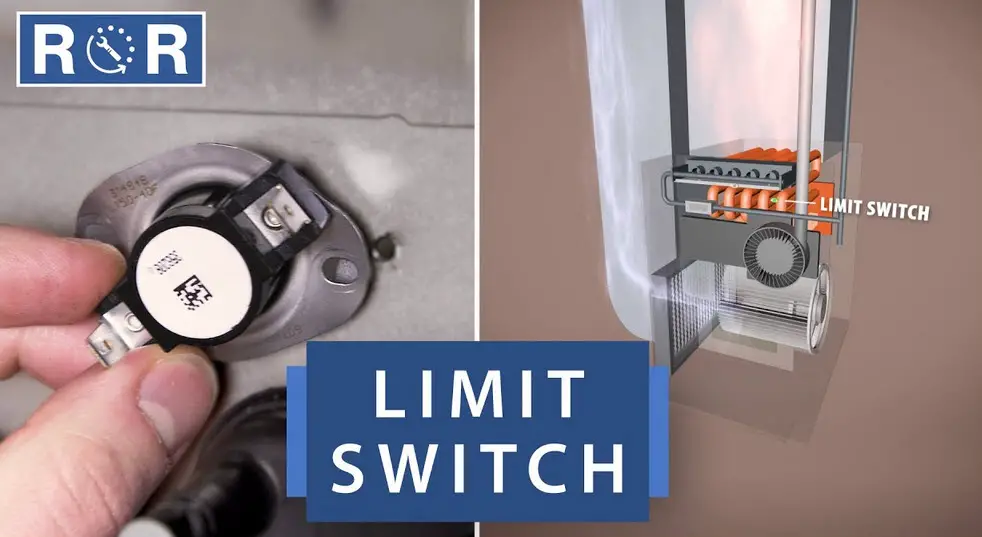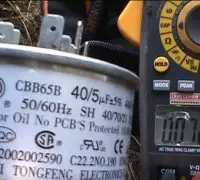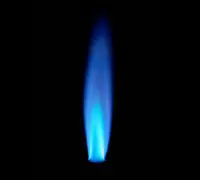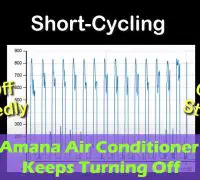Furnaces are reliable and sophisticated devices that come with many features for the most accurate performance. They go through a lot of stress and wear as they’re supposed to run and stop all the time, which makes the risk for issues, both minor and significant, always present/
Not every time your furnace is troubleshooting, you will have to call the HVAC technician. Some problems are relatively easy to fix, but you shouldn’t postpone the setting. Without servicing and proper maintenance, the furnace will only develop problems, ending with buying a new furnace.
Page Table of Contents
What is the high limit switch? What is it supposed to do?
The high limit switch in the gas furnace is a small component with two primary roles. It’s essential for proper operation, as it turns the fan motor on and off. Besides this role, the high limit switch will also reduce the risk of overheating for your furnace.
The high limit switch is made with a temperature-sensing probe (long) connected to a metal mounting plate. The button has wires going to the gas valve and the blower fan motor. Typically, it’s placed past the heat exchanger to identify the temperature of the supply air accurately.
The first role of the high limit switch
Throughout the regular operation, the high limit switch’s primary role is to monitor when the blower fan switches on and off. It’s better than the high limit switch controls the blower fan and not the thermostat. The blower fan shouldn’t turn on and off at the same time as the gas burner.
As the burner comes on, the heat exchanger needs a little time to heat up and even longer for the heat to go to the supply air inside the furnace. Should the blower fan turned on simultaneously with the burner, it would circulate cold air inside the house. The high limit switch identifies the supply air’s temperatures. Once the air is warm enough, the button will command the blower fan to star. It’s normal to have a three-minute delay between the thermostat turning the heat on and the warm air going through the vents. It’s because the fan waits for the limit switch to send the signal.
Once the thermostat identifies the air’s set temperature inside the house, it will also inform the gas burner to shut off. However, the blower fan will run for a little more time, as it will spread the heated air in the supply ducts inside your house. This way, the energy for heating the air won’t be wasted. If the supply air temperature inside the furnace decreases to a specific temperature, the high limit switch will blower the motor to turn off.
The second role of the high limit switch
The high limit switch is also essential for the safety of the furnace. As the furnace starts running, the high limit switch will switch on the blower fan when the supply air becomes hot. If the temperature gets too high, the furnace could be overheating, so the high limit switch will shut off the gas valve, stopping the heating.
Should overheating the trip the high limit switch several times, the furnace will switch to a “lockout” mode. Unless you’re servicing and reset it, it will not turn back on.
The feature is essential because overheating could make the heat exchanger crack, which will make the harmful carbon monoxide gas get inside your house.
Since the high limit switch will shut off the gas valve, it will protect both the furnace and the family.
How do you know that the high limit switch has tripped?
A tripped high limit switch will cause your furnace to “short cycling.” The furnace will turn on as usual but only run for a bit without generating any heat or making the temperature get to the setpoint, and then turn off. The cycle will repeat a couple of times every few minutes.
Why does the limit switch turn off the furnace?
There are four main reasons for which the high limit switch shuts down the furnace:
- The limit switch is dirty or has worn out.
- The flame sensor dirty isn’t clean.
- The heat exchanger detected low airflow and may overheat.
- The furnace is too big for your household.
Let’s take a closer look at each of the problems that make the high limit switch turn off your furnace.
Problems with the flame sensor
You will need to locate the high limit switch for observing the flame sensor rod. The high limit switch should be attached to the metal plate, attached to the furnace’s plenum (it’s a massive metal box where the air will be heated). Removing the cover should let you identify the high limit switch.
What’s the fix?
The flame sensor is the high limit switch area that goes into the plenum to identify temperatures. You will need to remove the two screws holding the high limit switch in place. You may use some sandpaper or steel wool for cleaning the flame sensor rod. Replacement with an identical part is the solution when the flame sensor is damaged.
Always check the user manual to see what components to buy. Cleaning the flame sensor will win you some time, but the part is cheap, so replacement isn’t a bad idea. The sensors do wear out in time, and cleaning isn’t a permanent solution.
Always carefully handle the flame sensor and hold it by the base without touching the flame sensor. Oil on your fingers can stay to the sensor, burning and creating a hot-spot that causes cracking.
A flame sensor is anything from $14 to $35, depending on the model and style. Many choose to replace the high limit switch as it’s only something from $12 to $30. A technician will ask $80 to $150 for an hour of labor, but dedicated DIYers can replace it independently.
The limit switch has to be replaced
It’s only a matter of time until the high limit switches wear out and cause problems. A defective high limit switch will trip at lower temperatures, leading to short cycling and lockout mode even if the furnace hasn’t overheated yet.
If you’re replacing the high limit switch on your own, expect to pay from $12 to $30, whereas professional replacement can go as high as $200.
Problems with airflow
When the airflow is reduced, the heat won’t get pushed out of the furnace as fast as it should, causing the furnace to overheat.
What’s the fix?
You should check and replace (if necessary) the filter any now and then. The furnace’s filter eliminates the particles that affect the furnace and pose a threat to your health. When the furnace filter is dirty, it will block the proper airflow and overheat the furnace.
The filter’s size and efficiency affect the price, which ranges from $3 to $25. A filter that traps the smallest particles is more expensive, for the obvious reasons.
Another solution is to check the air supply vents throughout the house to improve the cool airflow into your furnace.
The third solution is to observe the blower, which also collects dirt in time, slowing down the heat exchanger’s airflow.
You should call the HVAC technician for cleaning the furnace once a year, which ranges from $115 to $200. Regular maintenance and proper cleaning reduces the risk of problems and expands the durability of the furnace.
The furnace is too big for your household
A short furnace cycling could signal that it is too big for your home. When the furnace is too big for your home, it will heat the house too fast, so it will turn off too often. You should always check with the professional about the “load calculation,” which will help identify if the furnace’s wrong size leads to overheating.
When the load calculations reveal that the furnace is way too big for your house, you will have to replace the gas valve with another model with a lower capacity. If you own a 120,000BTU, but 80,000to 100,000 BTU model is the proper size, you should switch to a smaller gas valve.
Load calculations cost anything from $100 to $150, whereas the gas valve costs from $335 to $600, depending on the furnace’s size, model, and brand. Replacing the gas furnace is way more expensive, costing from $2,000 to $5,000, according to the size, brand, performance, and so on.
Low gas pressure can also cause short cycling. When the burners don’t light completely, there may not be enough flame for the flame sensor to identify.
What’s the fix?
You will need to call the HVAC technician for checking and testing your furnace. It’s possible to adjust the gas pressure, as the gas line’s the wrong size could cause the problem.
Should you suspect that low flame causes the problem, the burners need replacement and cleaning. When cleaning doesn’t solve the issue, you have to check the heat exchanger and the carbon monoxide.
Ductwork can also lead to short cycling, so it’s not a bad idea to take a look at the inflowing and outflowing vents. Furniture or various items in the house could block or dent the vents. It would help if you cleaned them of dryer lint, dirt, nesting/animals/waste, or anything else blocking the vents.
A professional for inspection and adjustment will cost you less than $200, whereas replacing the gas line can get as expensive as $450 (it depends on the location and length). Professional furnace cleaning ranges from $115 to $200, whereas vent cleaning may go as high as $500. It depends on how far into the ducts the professionals have to clean, the level of cleaning they should do, or the vents’ length.






